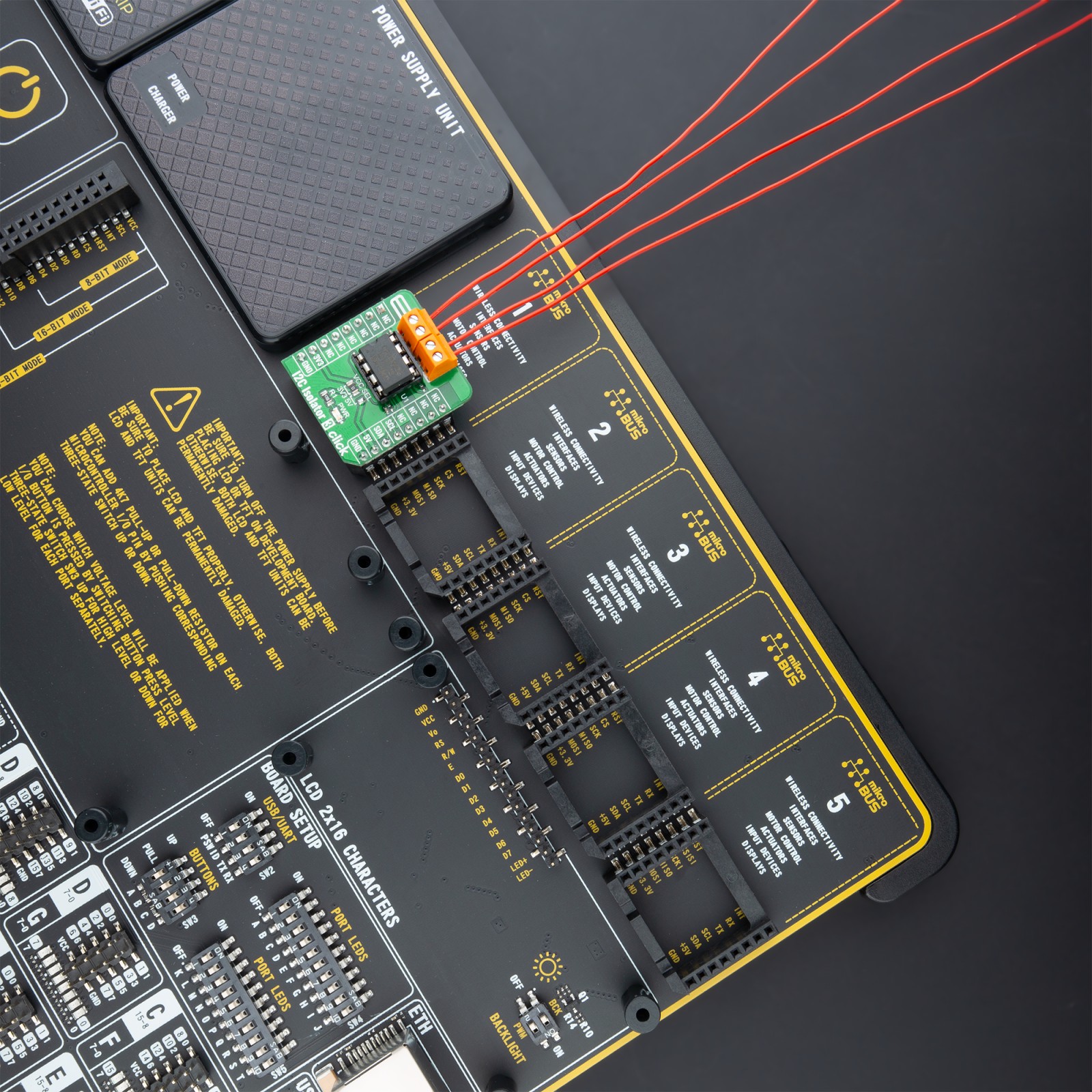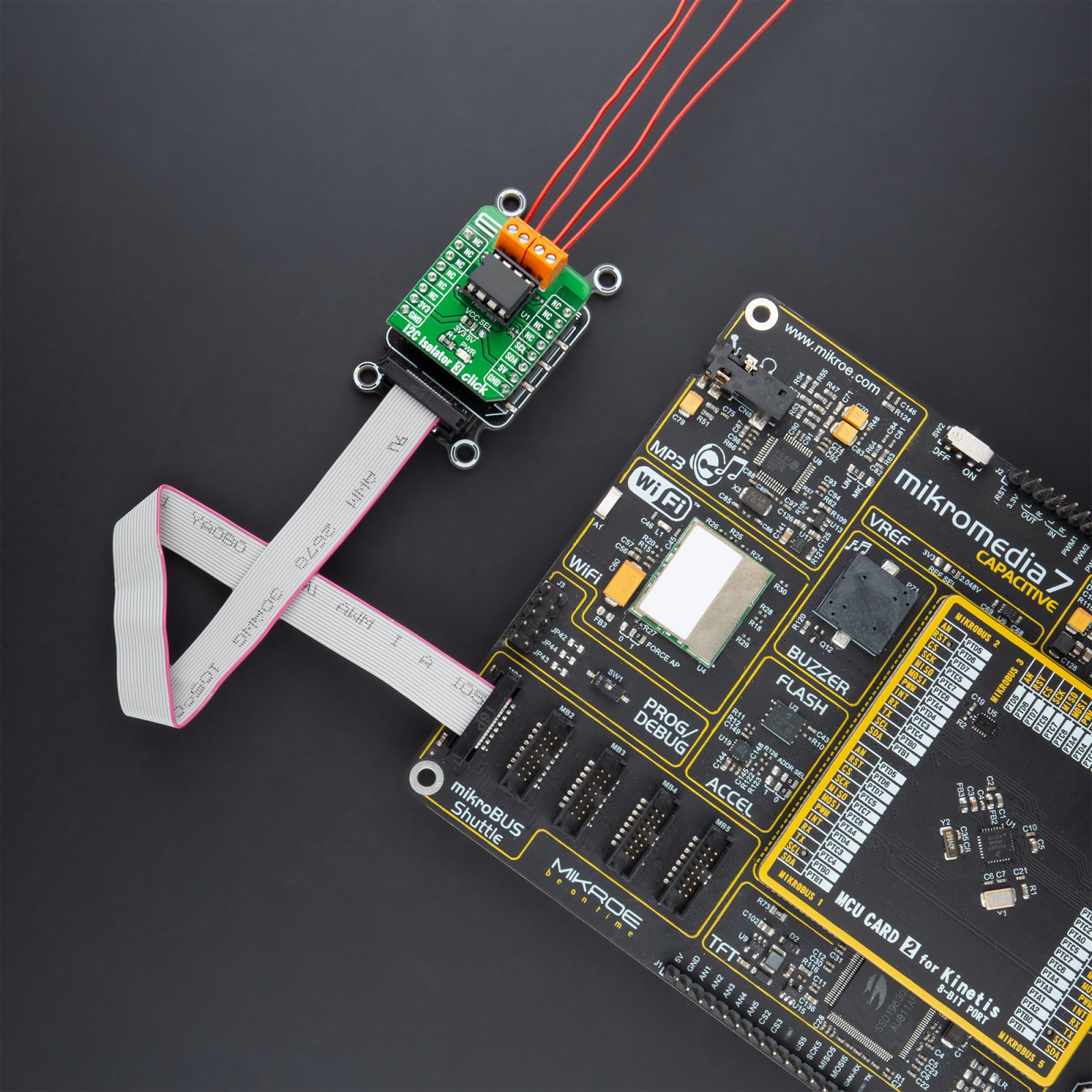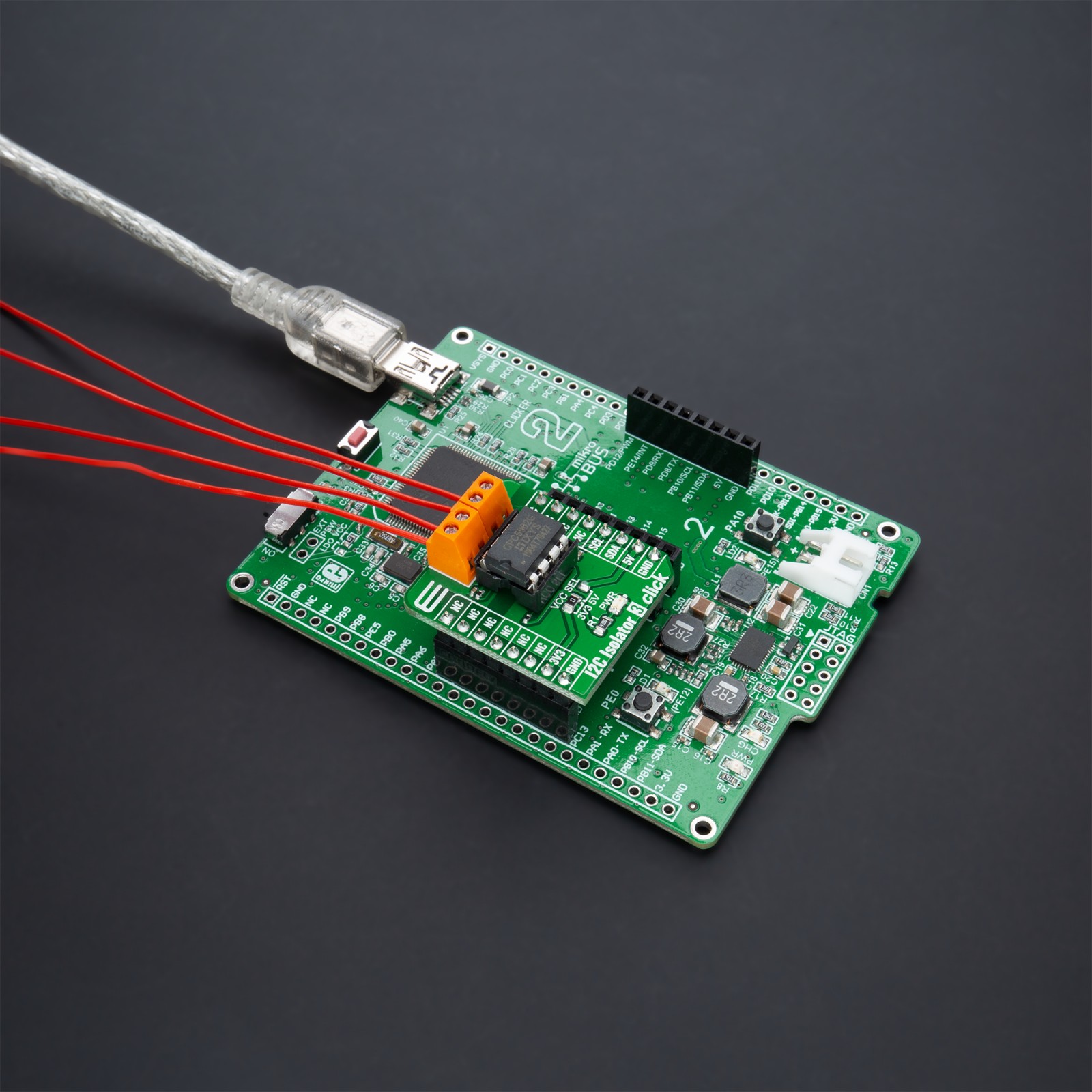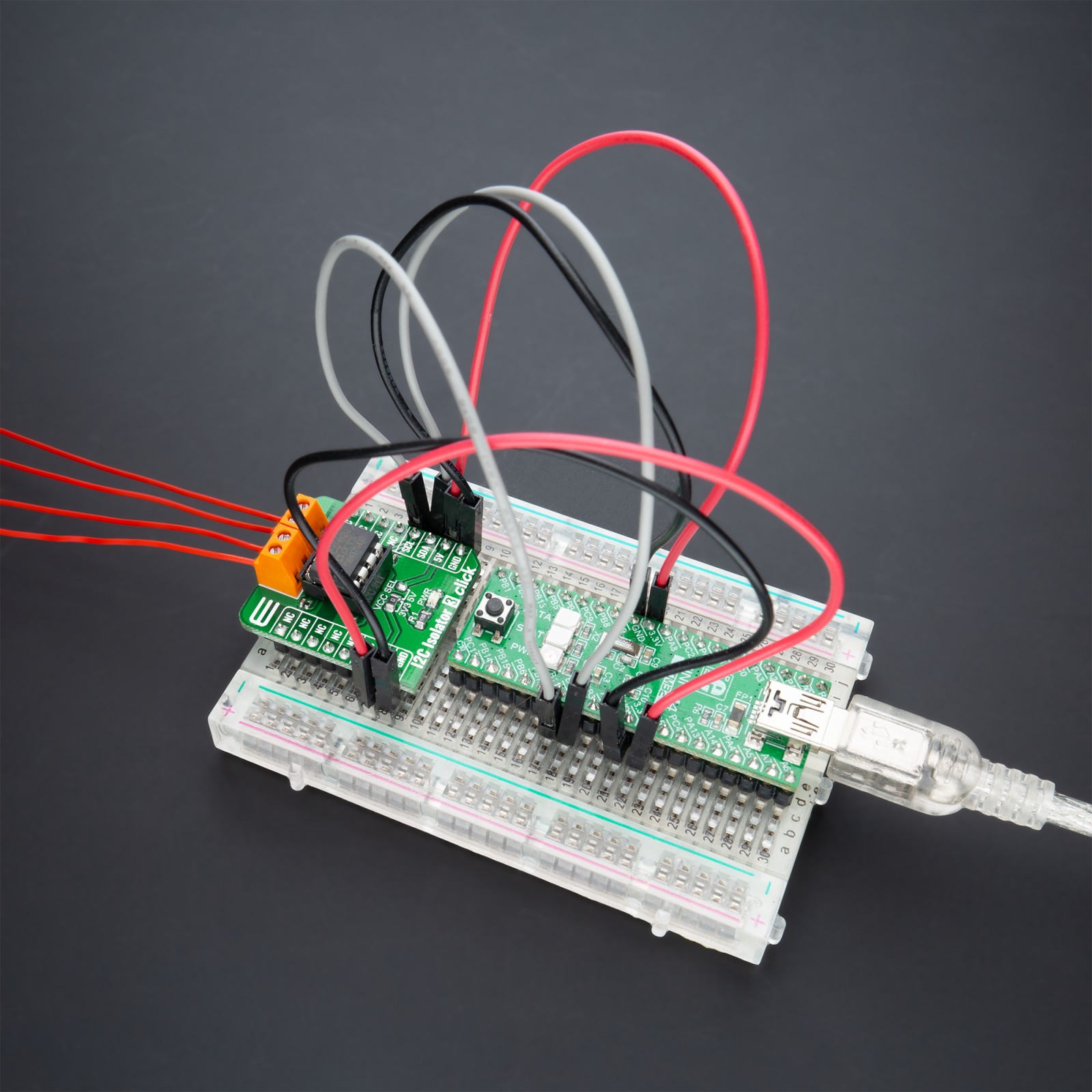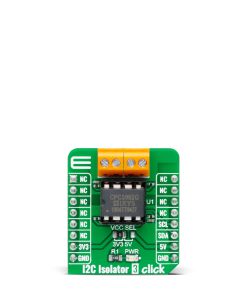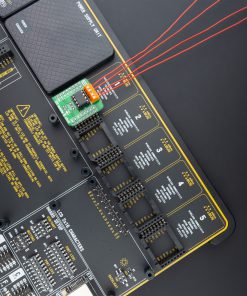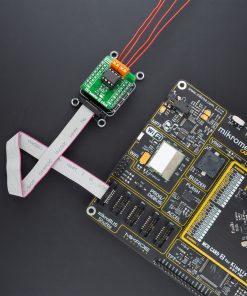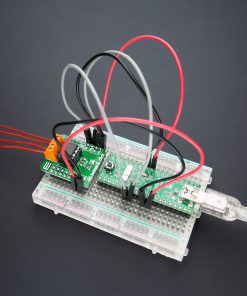I2C Isolator 3 Click
R265.00 ex. VAT
I2C Isolator 3 Click is a compact add-on board that offers completely isolated bidirectional communication. This board features the CPC5902, a dual optically isolated bidirectional logic-bus repeater from IXYS Integrated Circuits Division. The CPC5902 pass DC signals and don’t need to be clocked periodically to sustain the logic states. It supports I2C clock stretching while providing 3750Vrms of galvanic isolation. When different supply voltages are applied on both power sides of the CPC5902, it can also function as a logic level translator for levels as low as 2.7V or as high as 5.5V. This Click board™ is ideal for Power-over-Ethernet applications, providing buffering and isolation of the clock and data signals between MCU and the Power Supply Equipment (PSE) controller, and also suitable as an I2C bus length extender and logic-level translator.
I2C Isolator 3 Click is supported by a mikroSDK compliant library, which includes functions that simplify software development. This Click board™ comes as a fully tested product, ready to be used on a system equipped with the mikroBUS™ socket.
Stock: Lead-time applicable.
| 5+ | R251.75 |
| 10+ | R238.50 |
| 15+ | R225.25 |
| 20+ | R216.77 |




